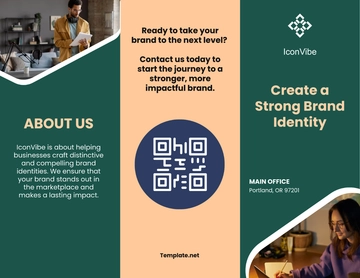Free Brand Strategy

I. Executive Summary
Customer retention is a critical element in sustaining the long-term success of a brand-driven company like [Your Company Name]. By leveraging strong brand identities, innovative marketing strategies, and customer-centric approaches, the company aims to foster loyalty and enhance lifetime value. This plan outlines actionable steps to ensure effective customer retention through brand engagement and satisfaction.
Objective
The primary goal of this strategy is to increase customer retention by 20% over the next year. This will be achieved by deepening customer connections with our brands. Strong branding creates emotional connections with customers, leading to long-term loyalty. The strategy prioritizes aligning the company’s values with customers’ expectations.
II. Brand Identity Enhancement
A compelling brand identity is the foundation of customer loyalty. Enhancing the visual, emotional, and experiential elements of the brand will strengthen customer trust.
Brand Consistency: Ensuring consistent messaging across platforms reinforces brand identity. Customers expect seamless communication reflecting the brand’s values.
Emotional Branding: Developing emotionally resonant stories for our brands will deepen customer attachment. This could include campaigns focusing on community and sustainability.
Improved Design Aesthetics: Refreshing logos, color schemes, and packaging aligns with evolving customer preferences. A modern, relatable design enhances perceived value.
Local Adaptation: Brands will incorporate localized elements to connect with regional markets. Customization ensures relevance and builds a sense of familiarity.
Sustainability Focus: Incorporating sustainable practices into branding appeals to eco-conscious customers. This alignment builds trust and loyalty over time.
III. Personalized Customer Experiences
Personalization is key to making customers feel valued. Tailoring interactions based on preferences and behavior will enhance satisfaction and retention.
Data-Driven Personalization: Analyzing customer data enables the delivery of personalized experiences. This includes tailored recommendations and exclusive offers.
Loyalty Programs: Innovative loyalty programs with personalized rewards motivate repeat purchases. These programs create an incentive for continued engagement with the brand.
Interactive Content: Personalized emails, app notifications, and social media campaigns improve customer interaction. Relevant content fosters deeper connections with the brand.
Customer Journey Mapping: Mapping customer journeys identifies pain points and opportunities for improvement. Addressing these issues enhances satisfaction.
Feedback Utilization: Using insights from surveys and feedback loops ensures customer needs are met. Regular adaptation to their preferences keeps the brand relevant.
IV. Data-Driven Retention Strategies
Data is a powerful tool for understanding and retaining customers. Analyzing historical and behavioral data will guide targeted retention initiatives. The data highlights areas of opportunity, such as reducing churn and improving satisfaction. Targeted actions focused on personalization and service quality will drive results.
Metric | 2050 Value | 2051 Target | Key Actions |
|---|---|---|---|
Repeat Purchase Rate | 40% | 55% | Personalized offers, loyalty rewards |
Customer Satisfaction | 75% | 85% | Regular surveys, improved service |
Churn Rate | 18% | 10% | Focus on at-risk customers |
Social Media Engagement | 50% | 70% | Enhanced campaigns, community building |
V. Digital Engagement Strategies
Engaging customers through digital platforms ensures consistent brand interaction and visibility. This section focuses on optimizing digital presence to drive retention.
Website Optimization: A user-friendly website enhances customer experience. Features like chatbots and personalized dashboards will improve engagement.
Social Media Campaigns: Interactive and relatable campaigns strengthen brand visibility. Encouraging user-generated content fosters community engagement.
Email Marketing: Regularly tailored emails keep customers informed about new offers and updates. This ensures the brand remains top of mind.
Mobile Apps: A dedicated app simplifies customer interactions. Features like loyalty tracking and personalized notifications enhance convenience.
Content Marketing: Publishing informative and engaging content builds trust and credibility. This strategy reinforces customer loyalty.
VI. Multi-Channel Integration
Integrating multiple channels ensures seamless communication and interaction across platforms. Multi-channel integration ensures customers have a consistent experience. Focused improvements in social media and app engagement will maximize retention.
Channel | Key Actions |
|---|---|
Enhanced personalization | |
Social Media | Frequent, engaging posts |
In-Store Promotions | Loyalty programs, events |
Mobile App | Push notifications, rewards |
VII. Employee Training
Retaining customers starts with empowering employees. Well-trained teams deliver exceptional service that drives customer satisfaction.
Comprehensive Onboarding: New employees will receive detailed training on the brand and customer retention goals. This ensures alignment with company objectives.
Ongoing Skill Development: Regular workshops and training sessions improve employee skills. Skilled employees provide better service, fostering loyalty.
Customer-Centric Mindset: Employees will be trained to anticipate customer needs and exceed expectations. A proactive approach ensures satisfaction.
Retention Metrics Awareness: Educating employees on the importance of retention metrics fosters accountability. Teams will understand their role in achieving goals.
Recognition Programs: Rewarding employees for exceptional service motivates continued performance. This positivity translates to improved customer interactions.
VIII. Monitoring and Reporting
Monitoring progress ensures that strategies are effective and goals are met. This section focuses on tracking and analyzing retention efforts.
Monthly Performance Reports: Regular reports provide insights into progress toward retention targets. This allows for timely course corrections.
Customer Feedback Analysis: Feedback is analyzed for recurring themes or issues. Addressing these improves satisfaction and loyalty.
Retention Dashboard: A dedicated dashboard tracks key metrics like churn rate and repeat purchases. Real-time data supports informed decisions.
Benchmark Comparisons: Comparing performance against industry benchmarks highlights strengths and weaknesses. This ensures competitiveness.
Annual Strategy Reviews: Strategies will be reviewed annually to incorporate lessons learned. Regular updates ensure alignment with evolving customer needs.
IX. Financial Impact
Understanding the financial implications of retention strategies helps allocate resources effectively. Investing in loyalty programs and personalized marketing delivers the highest returns. Increased budget allocation reflects the strategic importance of these initiatives.
Initiative | Budget (2050) | Budget (2051) |
|---|---|---|
Loyalty Program Expansion | $500,000 | $750,000 |
Personalized Marketing | $400,000 | $600,000 |
Digital Optimization | $300,000 | $450,000 |
X. Conclusion
To implement this strategy effectively, [Your Company Name] will establish dedicated teams for each retention initiative. Continued investment in technology and customer insights will sustain long-term retention success. This strategy plan positions [Your Company Name] to strengthen customer loyalty and achieve sustained growth through innovative branding and personalized engagement efforts.
- 100% Customizable, free editor
- Access 1 Million+ Templates, photo’s & graphics
- Download or share as a template
- Click and replace photos, graphics, text, backgrounds
- Resize, crop, AI write & more
- Access advanced editor
Develop your vision with the Brand Strategy Template from Template.net. Fully editable and customizable, this template is ideal for mapping out your brand’s goals, messaging, and identity. Personalize it easily in our AI Editor Tool with your specific strategies and branding. Its comprehensive design ensures clarity and drives impactful brand growth.





























